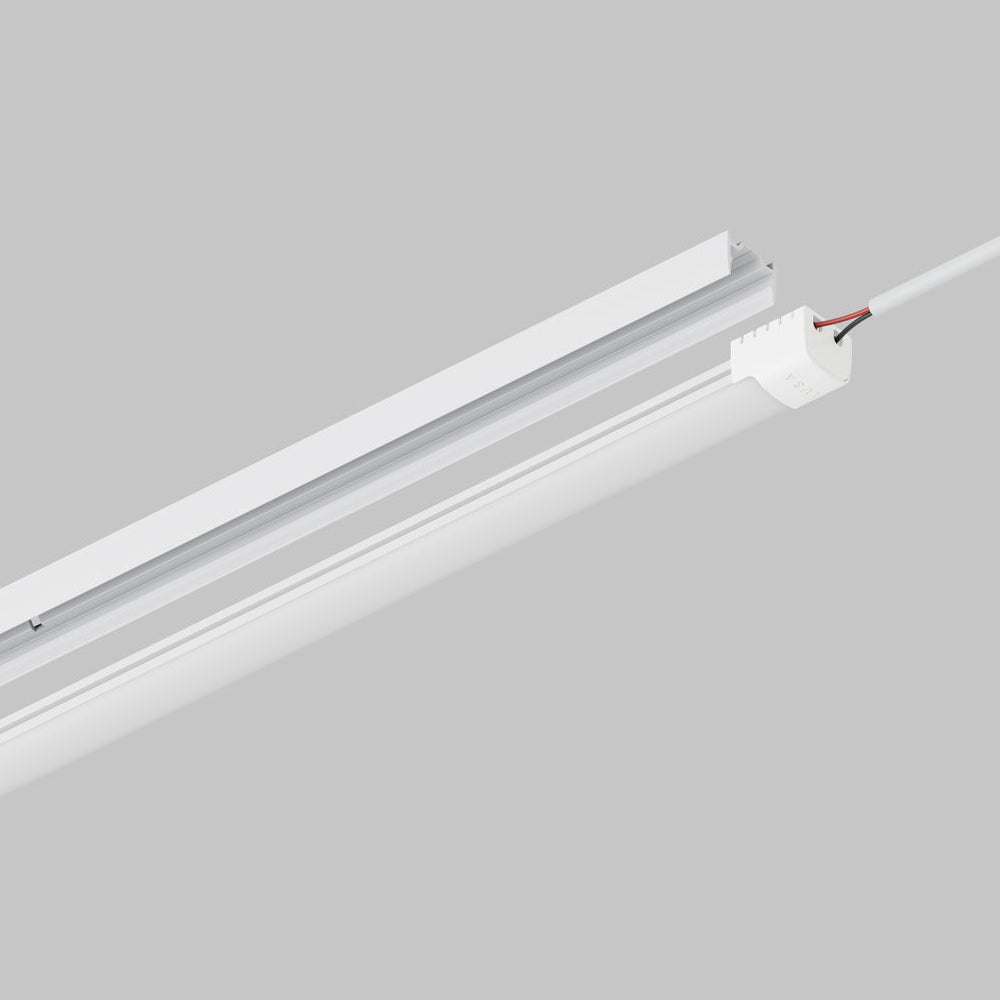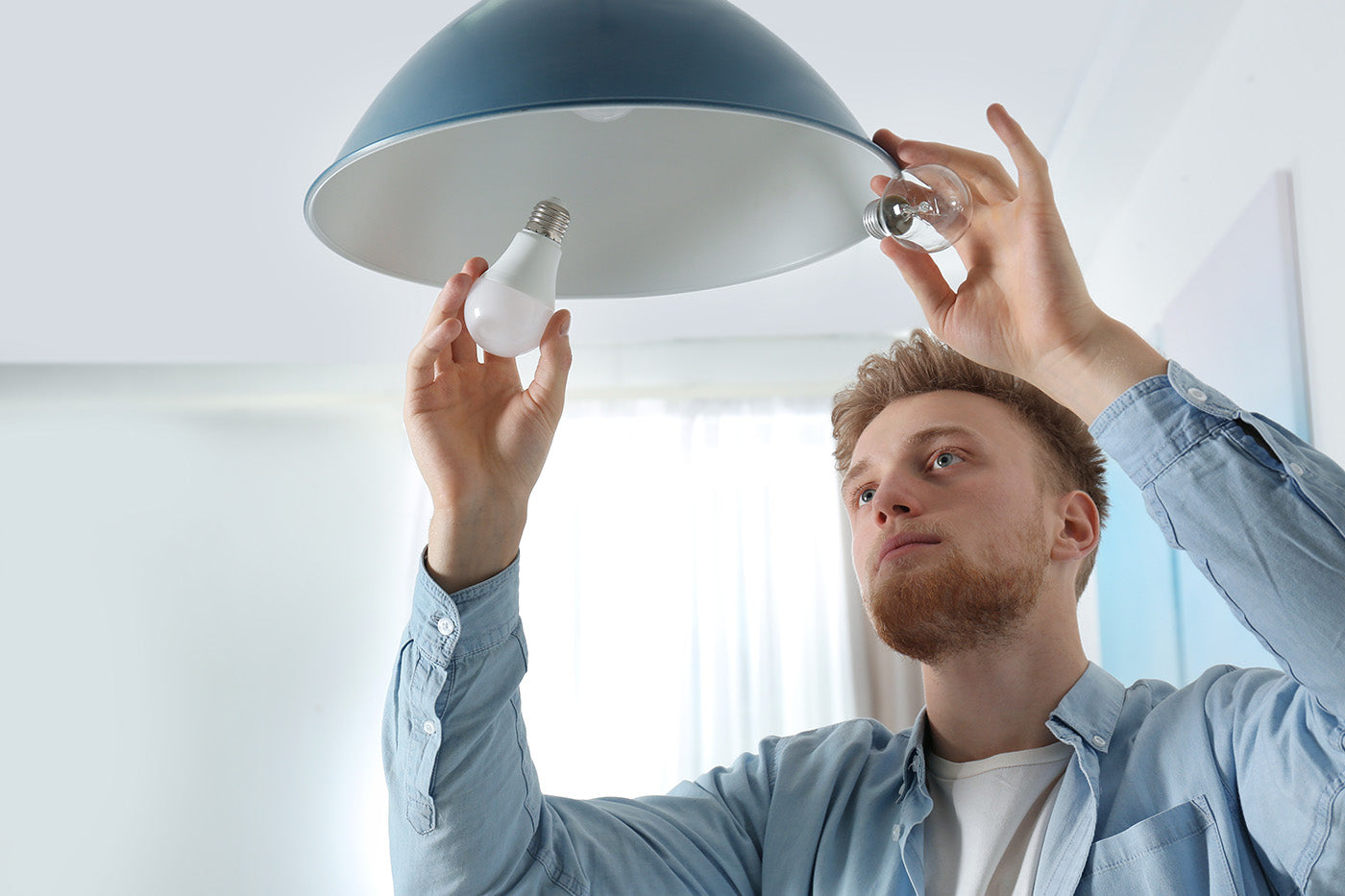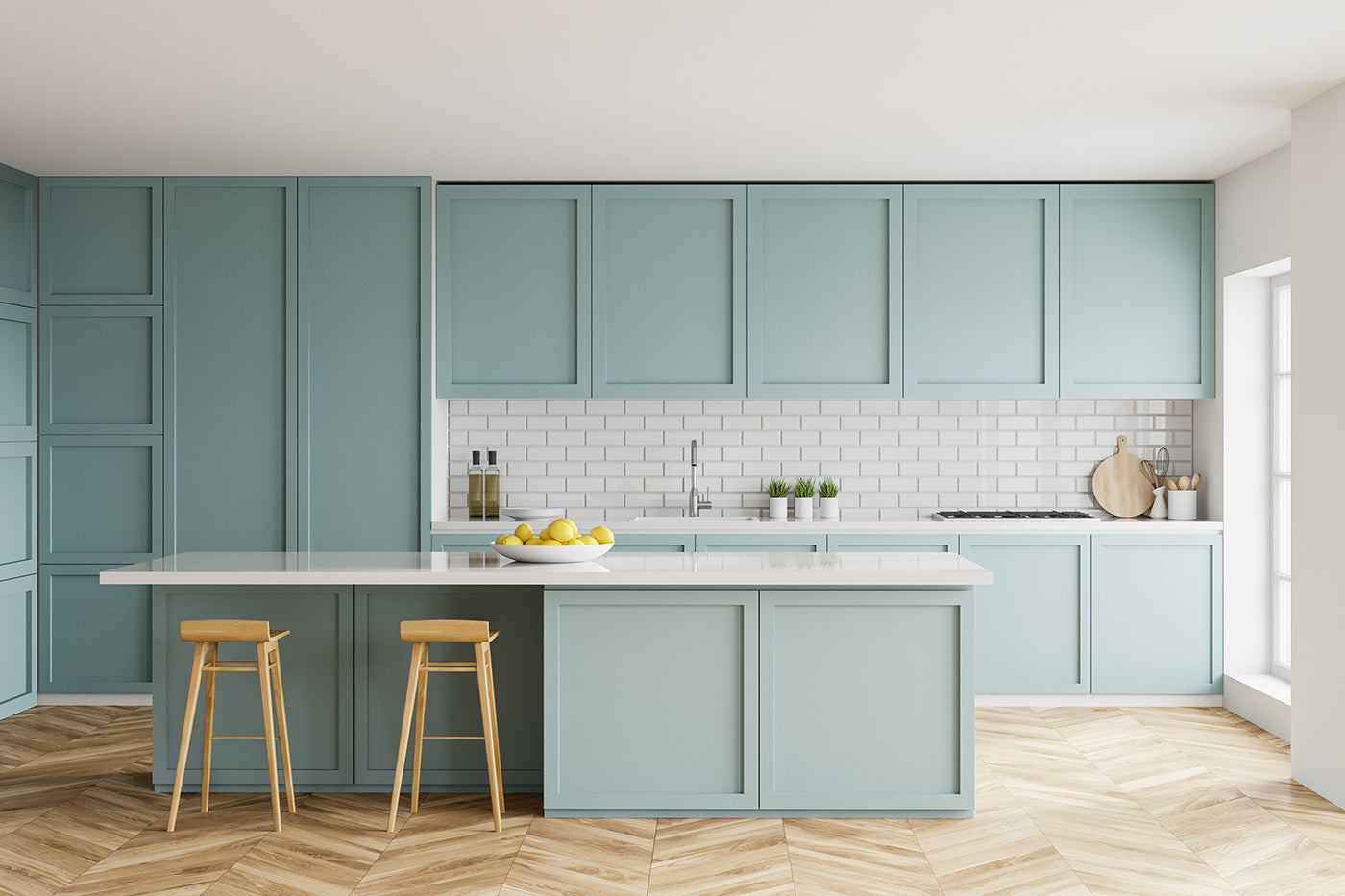Lighting in the home shapes our moods, enhances our environments, and crafts the ambiance of our living spaces. The right lighting can make a room feel cozy and welcoming or bright and energetic, significantly impacting our daily lives and well-being.
Among the many options for home illumination, LED lighting has emerged as a frontrunner, celebrated for its energy efficiency, longevity, and versatility. However, like any technology, LED lighting is not without its challenges.
Users may encounter various issues, from flickering and dimming troubles to color inconsistency and glare — much of which is attributed to a lack of quality. Understanding these common problems is essential for homeowners and professionals alike, ensuring that the benefits of LED lighting can be fully realized without compromise.
1. Flickering
One of the most commonly encountered problems with LED lighting is flickering. This phenomenon can occur for several reasons, ranging from incompatibility with dimmer switches to fluctuations in the home's voltage or the use of low-quality LED modules.
Unlike traditional incandescent bulbs, which maintain a constant light output, LEDs are more sensitive to changes in current. Therefore, even minor fluctuations in power can cause noticeable flickering.
This can be particularly troublesome when LEDs are paired with dimmer switches not specifically designed for LED technology. The mismatch can lead to intermittent flickering, which is annoying and can contribute to eye strain and headaches over time.
Solutions to this issue include ensuring that dimmer switches are compatible with LED modules and choosing high-quality LEDs that are designed to minimize flickering.
2. Dimming Issues
Closely related to the issue of flickering is the challenge of dimming LED lights. Many users switch to LED lighting, seeking the benefits of energy efficiency and longevity, but find themselves struggling with dimming these lights effectively.
Traditional dimmer switches are often calibrated for the higher electrical load of incandescent bulbs and may not perform well with the lower load of LEDs. This can result in LEDs that do not dim smoothly or at all, and in some cases, the light output can be inconsistent.
Additionally, LEDs have a different dimming mechanism compared to incandescent bulbs, which can lead to a non-linear dimming experience where the change in brightness is not proportional to the adjustment on the dimmer switch.
To overcome these issues, it is important to use dimmer switches that are specifically designed for LED technology and high-quality LED fixtures. These can accommodate a broader range of electrical characteristics and provide a smoother dimming experience.
3. Color Inconsistency
LED lighting offers an array of color temperatures, from the warm yellows of incandescent bulbs to the crisp, cool white of daylight. However, one common problem faced by users is color inconsistency across different LED modules and fixtures.
This issue results from variations in manufacturing processes or the use of different materials, leading to slight differences in light color even among modules of the same brand and model. These variations can detract from the overall aesthetic in scenarios where consistent ambiance is key, such as in open-plan areas or when highlighting artworks.
Overcoming this challenge involves purchasing all LED modules from the same batch or opting for brands like LUSA that guarantee color consistency across products. Additionally, looking for LEDs that specify color binning or using a single manufacturer for LED chips can help ensure uniformity in color temperature and quality.
4. Glare
LED lights are lauded for their brightness and energy efficiency, but they can produce a significant amount of glare without proper diffusion or shielding. It is particularly pronounced in environments where direct eye contact with light modules is common, such as in offices or kitchen workspaces.
Glare can cause discomfort, eye strain, and even headaches over prolonged periods. To mitigate this problem, selecting LED fixtures, a regressed light source with built-in diffusers or shades and covers that can soften the light output, is essential.
Positioning lights strategically to avoid direct lines of sight and choosing modules with appropriate brightness (lumens) for the space can also reduce the risk of glare. For task lighting, opting for LED fixtures designed with glare reduction in mind can provide illumination that is both effective and comfortable to work under.
5. Heat Buildup
Despite their reputation for being cool to the touch, LED lights do generate heat. Unlike incandescent bulbs, which emit heat in all directions, LEDs release heat backward, towards their base. This can lead to heat buildup within the fixture, especially if the lighting design does not adequately dissipate this heat.
Over time, excessive heat can degrade the LED's lifespan and efficiency, contradicting the expectation of LEDs as a long-lasting lighting solution.
To address this issue, be sure to choose LED fixtures designed with effective heat management systems, such as heat sinks or ventilation, that help dissipate heat away from the LED chip. Ensuring proper installation and adequate airflow around LED fixtures can also prevent overheating and extend the life of the modules.
6. Short Lifespan in High-Temperature Environments
One of the most celebrated benefits of LED lighting is its long lifespan. However, this advantage can be significantly compromised in high-temperature environments. The operating temperature has a profound impact on LED performance and longevity.
High ambient temperatures can accelerate the aging process of the LEDs, leading to a shorter lifespan than expected. This problem is particularly relevant in enclosed fixtures or areas with little to no airflow, where heat generated by the LED cannot escape effectively.
To mitigate this issue, it's important to consider the specific application and environment when selecting LED lighting. Opt for LEDs that have been rigorously tested and are rated for high temperatures or have been designed for use in enclosed fixtures.
Additionally, ensuring that your lighting fixtures are installed in well-ventilated areas can help maintain optimal operating temperatures and preserve the lifespan of your LEDs.
7. Potential Upfront Cost
LED lighting technology is often praised for its long-term cost savings, thanks to its energy efficiency and longevity. However, one barrier to entry for many consumers is the high upfront cost associated with purchasing high-quality LED lights.
Compared to traditional incandescent or halogen bulbs, LEDs can come with a significantly higher price tag. This initial investment can be discouraging, especially for those looking to outfit their entire home or business with LED lighting.
However, it’s important to understand the long-term savings that LEDs offer in terms of lower energy bills and fewer replacements. Consumers should consider the total cost of ownership, which includes the initial purchase price plus the cost of electricity and replacement over the modules’ lifetime.
Additionally, prices of LED lighting have gradually decreased as technology advances and becomes more widespread, making it increasingly accessible.
8. Compatibility with Existing Fixtures
Another common problem with LED lighting is compatibility with existing light fixtures and systems. Many homes and businesses have lighting fixtures designed for incandescent or fluorescent bulbs, and not all of these are suitable for direct replacement with LEDs.
This can result in issues such as poor fit, unsatisfactory light distribution, or even damage to the LED module or fixture due to incompatible voltage or physical dimensions. Additionally, some older dimming systems may not work correctly with modern LED modules, leading to flickering, buzzing, or failure to light up.
To avoid these compatibility issues, it's important to research and possibly consult with lighting professionals before purchasing LED modules for existing fixtures. Look for LEDs that are specifically designed as replacements for the type of modules and fixtures you currently have.
Manufacturers like LUSA also provide detailed compatibility charts and retrofit kits to ease the transition to LED lighting, ensuring a smooth and efficient upgrade.
9. Complexity of Choice
Navigating LED lighting options can be overwhelming for consumers. With many choices in terms of color temperature, lumens (brightness), efficiency, and quality, making an informed decision requires more than just picking a module off the shelf.
The complication is further compounded by the introduction of smart LEDs that offer connectivity and additional features like color changing, scheduling, and compatibility with home automation systems. This vast selection, while beneficial in tailoring lighting to specific needs and preferences, can confuse consumers.
To simplify the selection process, it's advisable to start with a clear understanding of the lighting requirements for each space, including brightness, color temperature, and control options. Reading product reviews, consulting with lighting professionals, and sticking to reputable brands can also help make an informed decision that aligns with both needs and budget.
Some manufacturers have worked hard to simplify the LED selection decision by offering universal LED modules with features such as a switch that allows for variable lumen outputs and warm dim technology that shifts the color temperature of the light as it is dimmed. Such modules are very flexible and can be used throughout multiple applications in a home.
10. Environmental Concerns
While LED lights are celebrated for their energy efficiency and long lifespan, contributing to environmental sustainability, they are not without their own environmental concerns. The manufacturing process of LEDs involves the use of rare earth elements, and the modules themselves contain small amounts of heavy metals like lead and arsenic.
Some manufacturers take greater care than others. Organizations like Declare conduct the Living Building Challenge, which tracks the manufacturing process of multiple building products, including lighting. They list manufacturers that produce LED lighting in an environmentally friendly manner.
Improper disposal of LED modules can lead to these substances leaking into the environment, posing a risk to soil and water quality. Additionally, the energy used in producing LED lights and the challenges associated with recycling them due to their complex construction are points of environmental consideration.
To mitigate these concerns, consumers are encouraged to recycle LED modules responsibly at facilities equipped to handle them and to consider the full environmental impact of their lighting choices, from production through disposal.
As the industry progresses, advancements in manufacturing and recycling processes are expected to reduce the environmental footprint of LED lighting further.
Lighting the Path Forward With LUSA
Considering solutions for these common LED issues, the importance of selecting quality products and manufacturers prioritizing innovation, customer satisfaction, and environmental responsibility cannot be overstated.
This is where LUSA stands out in LED lighting. With our commitment to high-end design, comfort, and reliability, LUSA addresses the issues highlighted today. Our products are designed with the user's well-being in mind, ensuring that each lighting solution meets and exceeds expectations.
Check out LUSA’s modern LED lighting solutions today. They are manufactured responsibly and designed to address common issues head-on, offering flicker-free performance, seamless dimming compatibility, and consistent color across all products. This commitment to quality ensures minimized glare, effective heat dissipation, and a strong design that withstands high-temperature environments.
Sources:
Lighting Choices to Save You Money | Department of Energy
The Light and the Heat: Productivity Co-Benefits of Energy-Saving Technology | MIT Press



